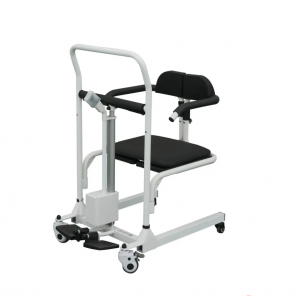As our loved ones age, they may need help with daily tasks, including using the bathroom. Lifting an older person to the toilet can be a challenging and tricky task, but with the right techniques and equipment, both caregivers and individuals can accomplish this task safely and comfortably.
First, it is important to assess an older adult’s mobility and strength. If they are able to carry some weight and assist in the process, it is crucial to communicate with them and include them in the movement as much as possible. However, if they are unable to bear weight or assist, proper lifting techniques must be used to avoid injury to both parties.
One of the most important tools for lifting an older person to the toilet is a transfer belt or gait belt. The strap wraps around the patient’s waist to provide caregivers with a secure grip while assisting with transfers. Always make sure the safety belt is securely in place and the caregiver is holding the patient firmly before attempting to lift the patient.
When lifting people, it is important to use proper body mechanics to avoid back strain or injury. Bend your knees, keep your back straight, and lift with your legs instead of relying on your back muscles. It’s also important to communicate with people throughout the process, letting them know what you’re doing and making sure they feel comfortable and safe.
If personnel are unable to bear any weight or assist with the transfer, a mechanical lift or crane may be required. These devices safely and comfortably lift and transfer patients to the toilet without putting stress on the caregiver’s body.
In summary, carrying an older person to the bathroom requires careful assessment, communication, and the use of appropriate equipment and techniques. By following these guidelines, caregivers can ensure a safe and comfortable experience for their loved ones while assisting them with this important task.
Post time: May-30-2024







